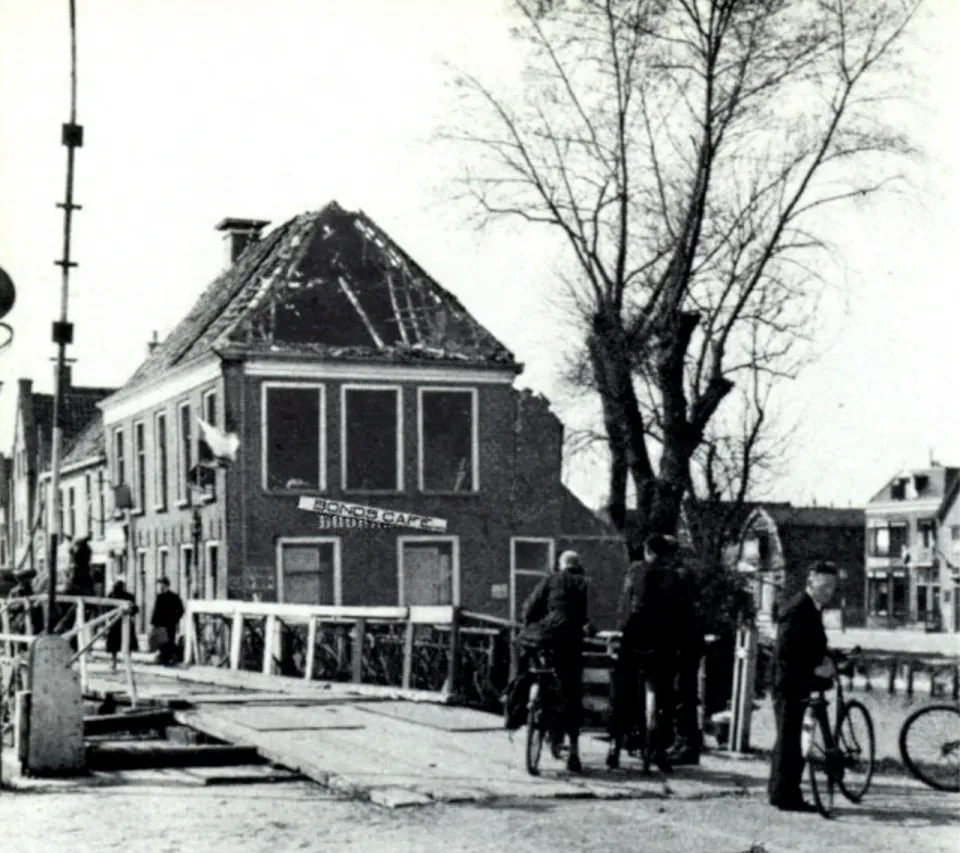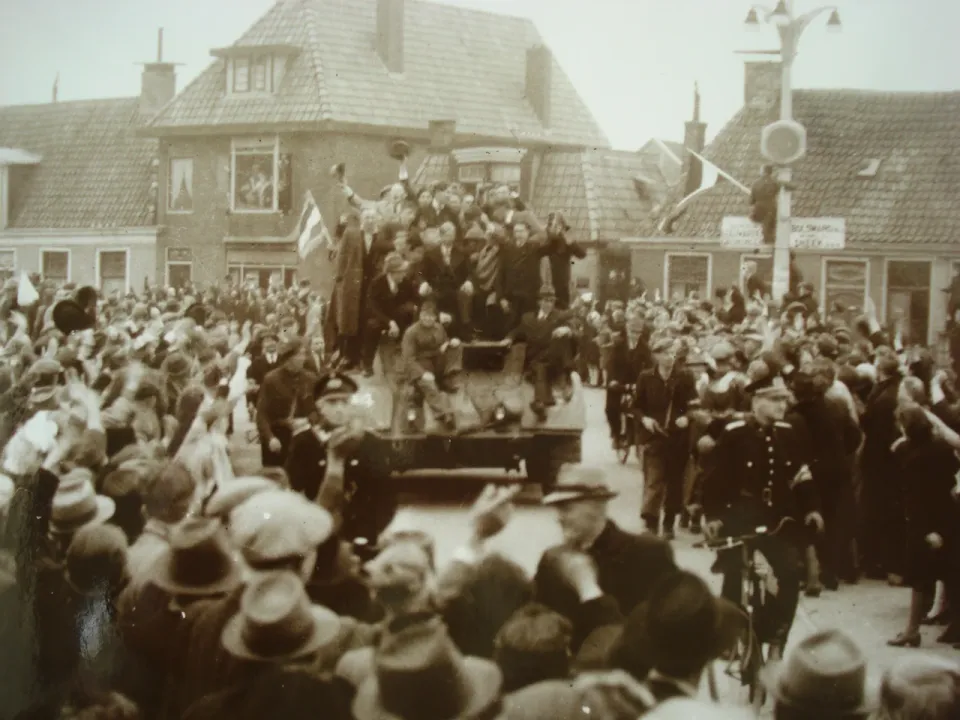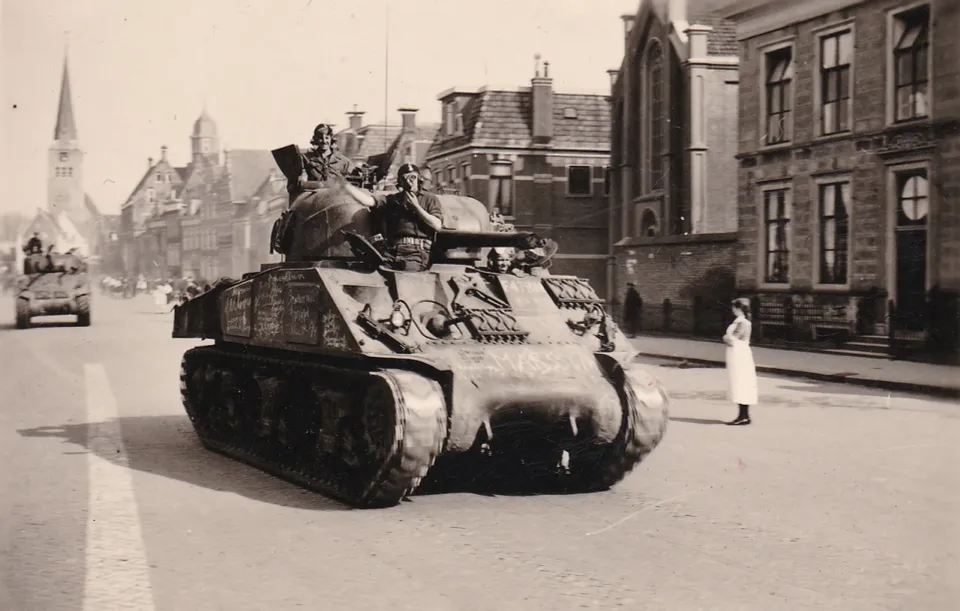Locations
2257 to 2280 of 5440 results
-
De IJstuin
De IJstuin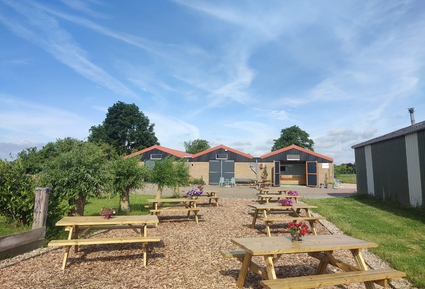 Dronryp
Dronryp
from your location
-
Sushi House Harlingen
Sushi House Harlingen Harlingen
Harlingen
from your location
-
Beeld Hein Mader Bûterheideveld
Beeld Hein Mader Bûterheideveld Makkinga
Makkinga
from your location
-
Voormalige openbare lagere school De Oprel Oudebildtzijl
Voormalige openbare lagere school De Oprel Oudebildtzijl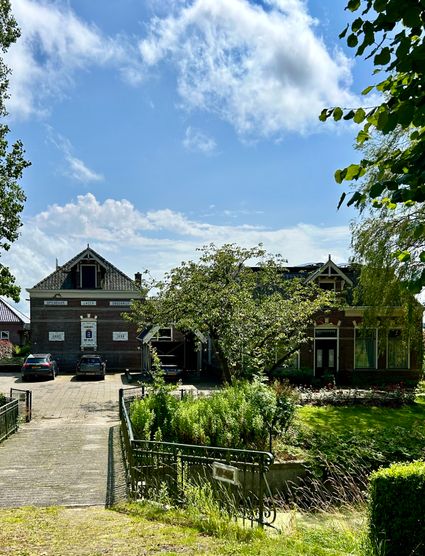 Oudebildtzijl
Oudebildtzijl
from your location
-
Familieboten - Ouwe Peer
Familieboten - Ouwe Peer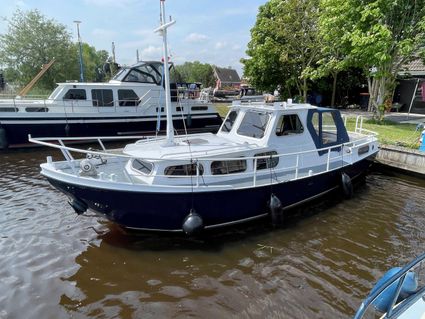 Franeker
Franeker
Direct boekbaar
from your location
-
Beach sailing
Beach sailing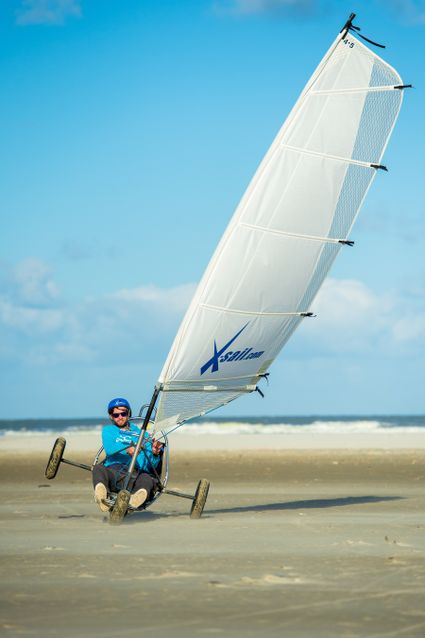 Nes
Nes
from your location
-
The liberation of Friesland
The liberation of Friesland
By 18 April, the whole province of Friesland had been liberated, except for the Wadden Islands. Compared to other provinces, there was little fighting in Friesland. Overall, the few thousand German troops who had been unable to escape from Friesland were defeated by the Canadians relatively quickly.
The commander of the Royal Canadian Dragoons, Lieutenant Colonel Landell, praised the actions of the resistance by stating that "Friesland liberated herself". While that may be a bit of an exaggeration, the actions of the Frisian resistance undoubtedly accelerated the liberation. And reduced the number of casualties on the Allied side.
At least 31 resistance fighters lost their lives in confrontations with German troops and their Dutch accomplices. At least eleven Canadians and one Frenchman were killed on the Allied side. Dozens of civilian victims were also killed in the fighting and shelling. The number of casualties on the German side is not known, but it is believed that the number ran into hundreds. With 320 destroyed and 4000 damaged homes and 80 destroyed bridges, Friesland was materially the least damaged province of the Netherlands.
Many German soldiers fled towards the western part of the country. The retreating German troops gathered mostly in Harlingen, Makkum and Lemmer. From there, they tried to get away by boat across the IJsselmeer or via the Afsluitdijk to North Holland. The Wadden Islands also became a refuge for collaborators and German soldiers. Here, liberation was longer in coming.
On the island of Terschelling, the last German troops were disarmed by a British artillery regiment on 29 May. Two days later, the British crossed from Terschelling to Vlieland, and the liberation of that island was also a fact. Ameland was liberated on 3 June.
Personnel from the infamous Scholtenhuis, the SD headquarters in Groningen, had entrenched themselves on Schiermonnikoog. After their departure on 31 May, there was a celebration on the island, in spite of the six hundred members of the occupying troops who still were there. Only on 11 June did the last German soldiers leave Schiermonnikoog, and then the whole province of Friesland was free.
Most Canadian units that had liberated Friesland continued the battle in Groningen and North Germany after 18 April. Their war ended on 8 May 1945, when the surrender of all German armed forces became effective.
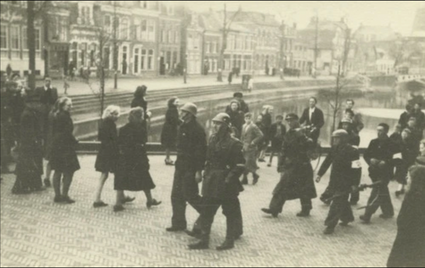 Eanjum
Eanjum
from your location
-
-
Mini- campercamping Oer de Haske
Mini- campercamping Oer de Haske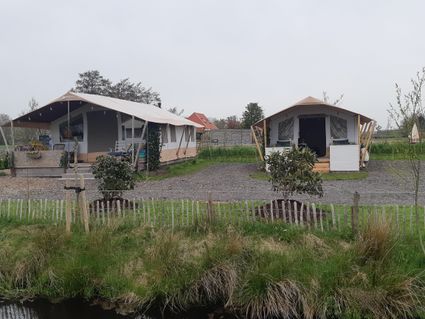 Oudehaske
Oudehaske
from your location
-
Paintball Xperience
Paintball Xperience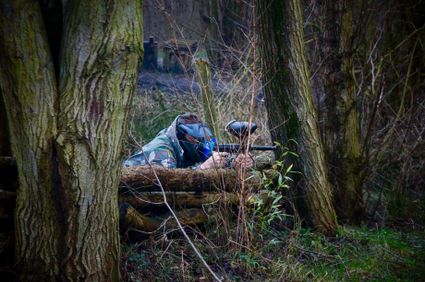 Leeuwarden
Leeuwarden
from your location
-
Filenspolder Nature Reserve
Filenspolder Nature Reserve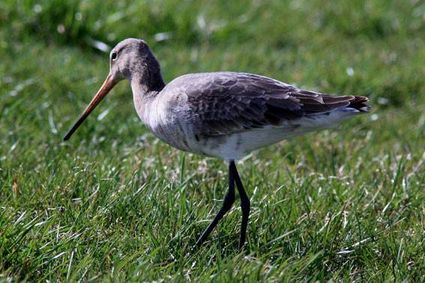 Witmarsum
Witmarsum
from your location
-
Veerpont Keallepoat (Joure Jachthaven)
Veerpont Keallepoat (Joure Jachthaven)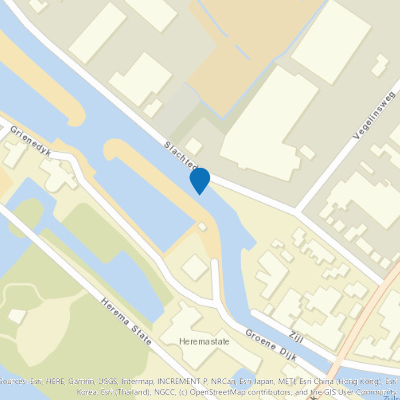 Joure
Joure
from your location
-
De Vlinderplas Swimming Lake
De Vlinderplas Swimming Lake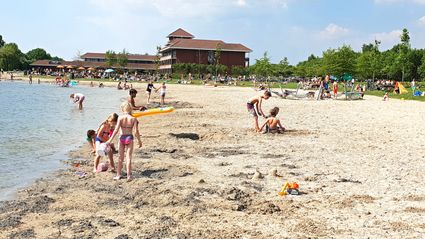 Wolvega
Wolvega
from your location
-
Bruinsma Bio
Bruinsma Bio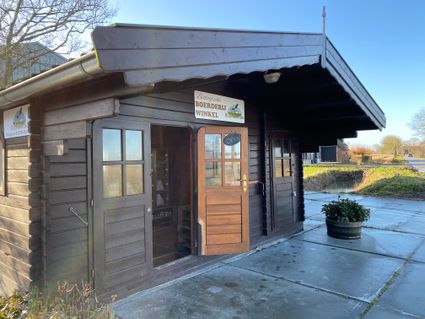 Sexbierum
Sexbierum
from your location
-
Aanlegplaats Achlum | Achlumervaart
Aanlegplaats Achlum | Achlumervaart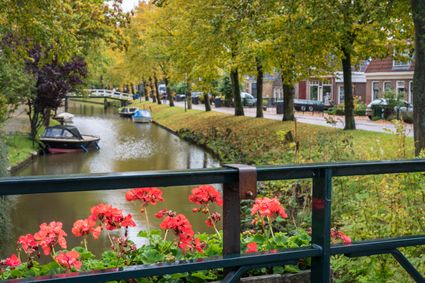 Achlum
Achlum
from your location
-
Outdoor Veldboom
Outdoor Veldboom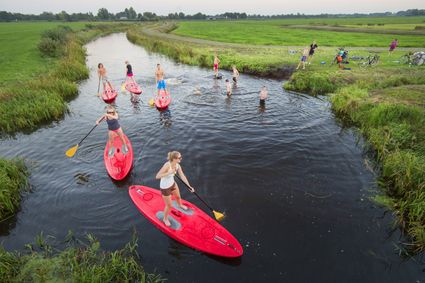 Eernewoude
Eernewoude
from your location
-
TOP Beetsterzwaag/Olterterp
TOP Beetsterzwaag/Olterterp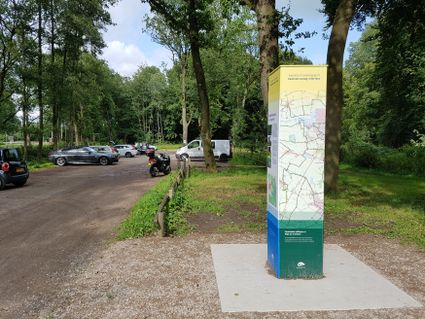 Olterterp
Olterterp
from your location
-
Kazen uit de vogelrijke Terschellinger polder
Kazen uit de vogelrijke Terschellinger polder Oosterend Terschelling
Oosterend Terschelling
from your location
-
Kaasboerderij De Deelen
Kaasboerderij De Deelen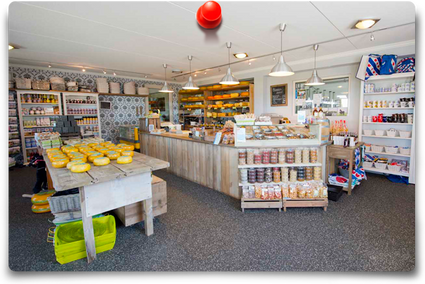 Tijnje
Tijnje
from your location
-
Minicamping en Theetuin Slappeterp
Minicamping en Theetuin Slappeterp Slappeterp
Slappeterp
from your location
-
Voormalige Marneslenk
Voormalige Marneslenk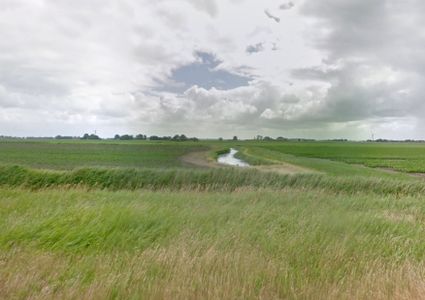 Pingjum
Pingjum
from your location
-
Vakantiehuisjes Marsherne - Tjalk Wuta
Vakantiehuisjes Marsherne - Tjalk Wuta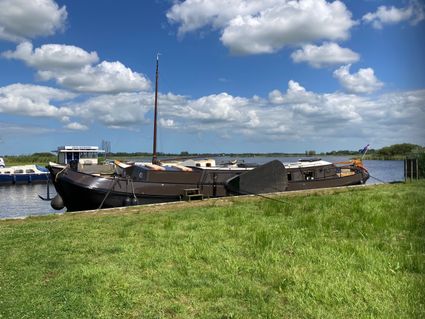 Poppenwier
Poppenwier
Direct boekbaar
from your location
-
Kamperen bij Farsk
Kamperen bij Farsk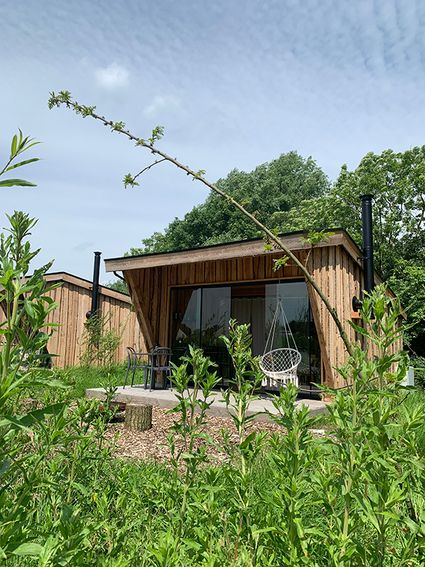 Britswert
Britswert
from your location
-
Oranje Hotel Leeuwarden
Oranje Hotel Leeuwarden Leeuwarden
Leeuwarden
from your location
-
Franeker bevrijd
Franeker bevrijd
Op 15 april 1945 wordt Franeker bevrijd. ‘s Middags bereikt een verkenningseenheid van de Royal Canadian Dragoons, komend vanuit Leeuwarden, als eerste de stad. Diezelfde dag trekken de overgebleven Duitse militairen zich terug richting Harlingen. Om hun aftocht te dekken blazen ze de brug aan het Leeuwarderend op.
In de vroege ochtend van zondag 15 april heerst in Franeker een gespannen stilte. Volgens de geruchten zouden de Canadezen Leeuwarden al in handen hebben en nu onderweg zijn naar Franeker. Reikhalzend wordt naar de komst van de Tommies uitgekeken. Maar er zijn nog Duitse soldaten in de stad. Dan wordt de stilte verscheurd door drie geweerschoten die waarschuwen voor een enorme ontploffing.
Om hun aftocht in de richting van Harlingen te dekken, blazen de bezetters de brug aan het Leeuwarderend, die meestal Saakstra’s brug wordt genoemd, op. Saakstra’s brug is een essentieel punt in de enige doorgaande route van Leeuwarden naar de havenstad. Het taaie stalen bouwwerk geeft zich echter niet zomaar gewonnen. Tot vijf maal toe moet er een springlading tot ontploffing worden gebracht, alvorens de Duitsers het genoeg vinden en haastig vertrekken. De omliggende panden lopen veel schade op. Vooral het Bondshotel, tegenwoordig de Stadsherberg, moet het ontgelden.
Onmiddellijk beginnen de inwoners van Franeker aan een provisorisch herstel. Bij het station liggen spoorstaven, die door een grote groep mannen op de schouder naar de brug worden gedragen en van kant naar kant worden gelegd. Bielzen komen daar overheen te liggen. Als het werk bijna klaar is, staat de eerste Canadese verkenningswagen al te wachten. In de middag rijdt een grote colonne Canadees oorlogsmaterieel, waaronder tanks, over de straatweg vanaf Leeuwarden naar Franeker.
Van heinde en ver is de plaatselijke bevolking naar de straatweg gegaan om het spektakel te bekijken. Aangekomen in Franeker volgt een ware zegetocht door de stad. ’s Avonds trekt het zware materieel zich weer terug richting Leeuwarden, maar de volgende dag, maandag 16 april, rijdt de colonne opnieuw door Franeker om op te rukken naar Harlingen.
De Canadezen vestigen een hoofdkwartier in het monumentale stadhuis. Ze blijven er nog tot het eind van 1945, alvorens terug te keren naar huis.
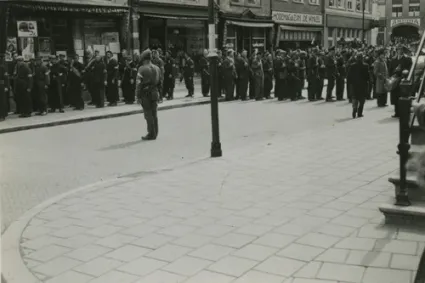 Franeker
Franeker
from your location
-


